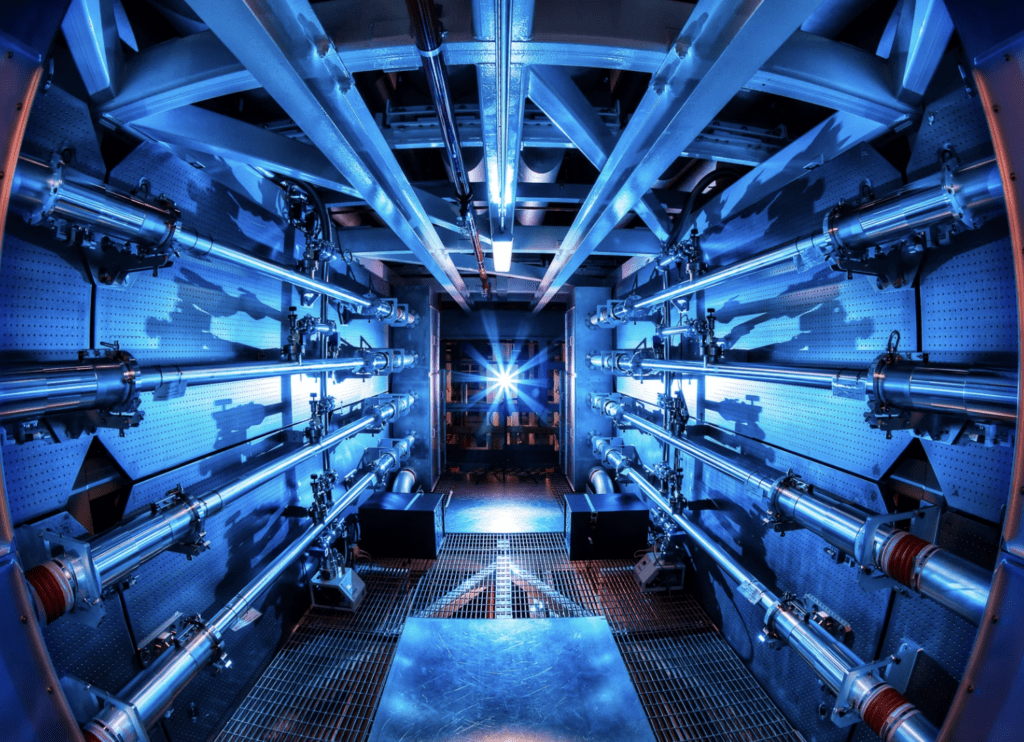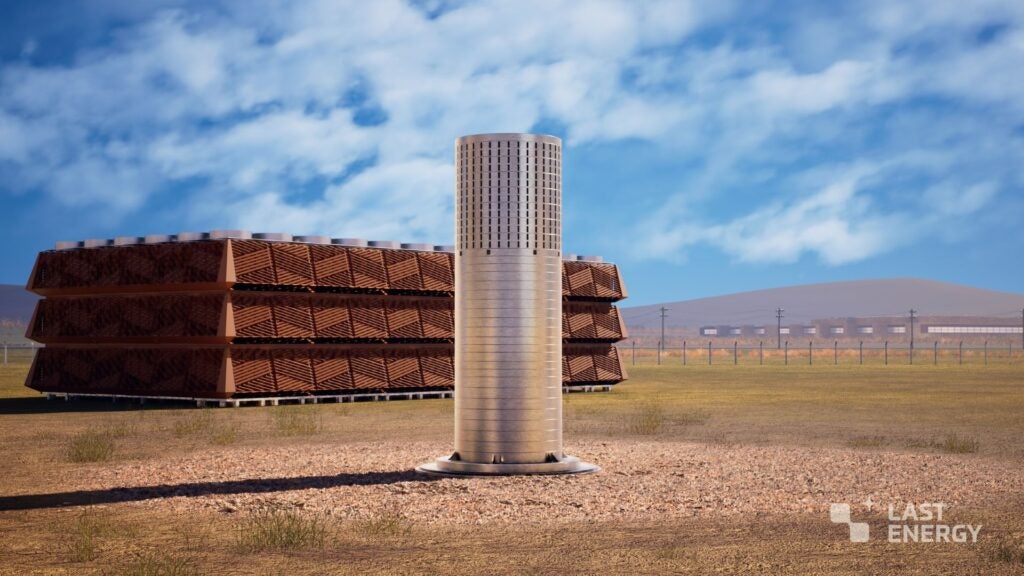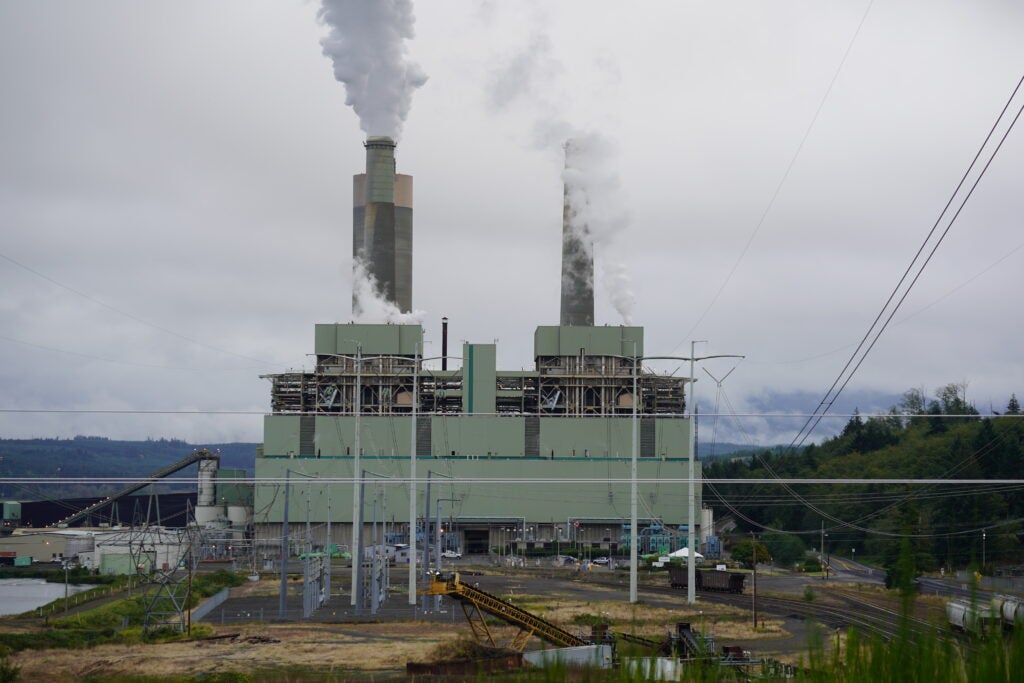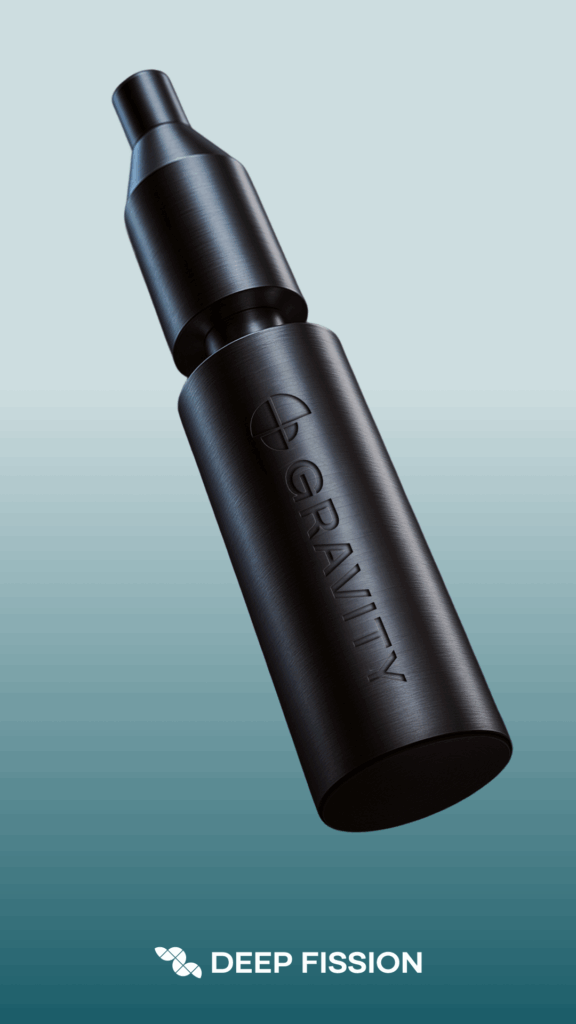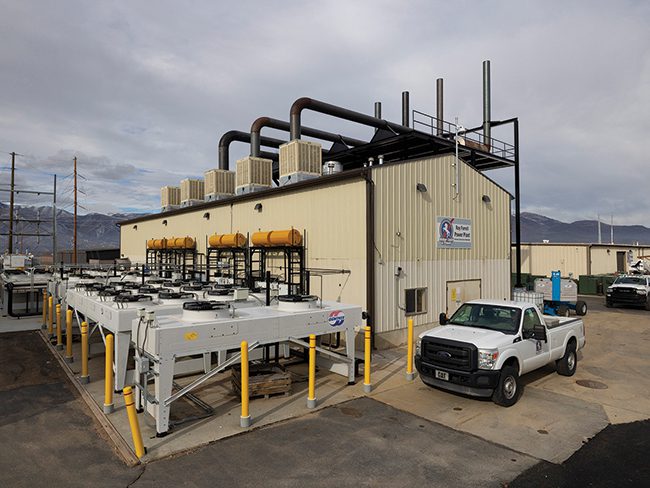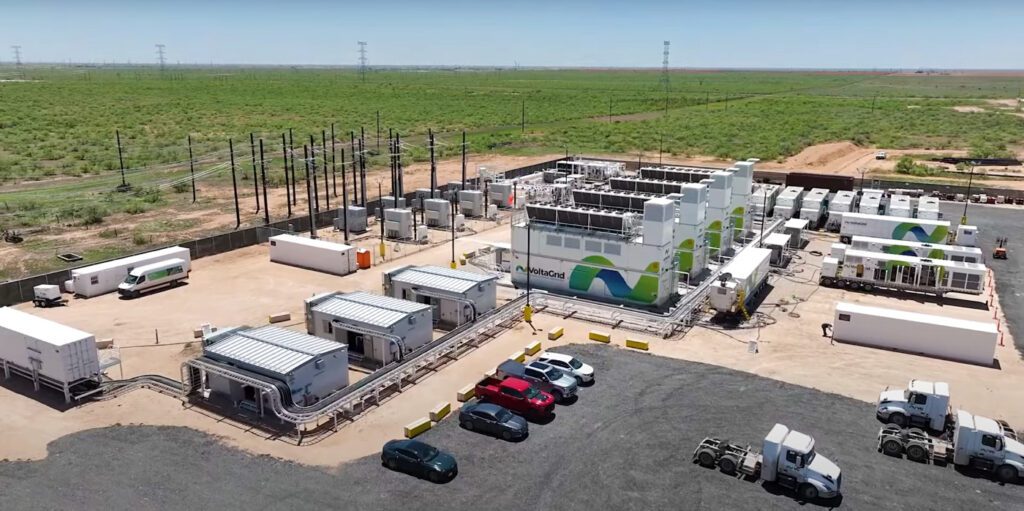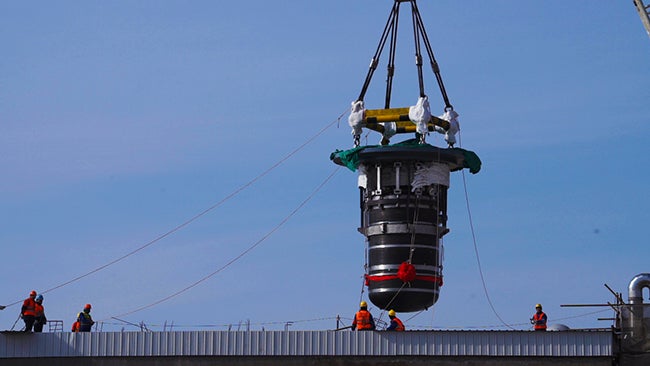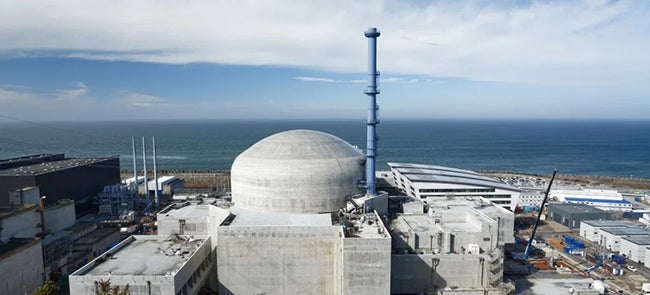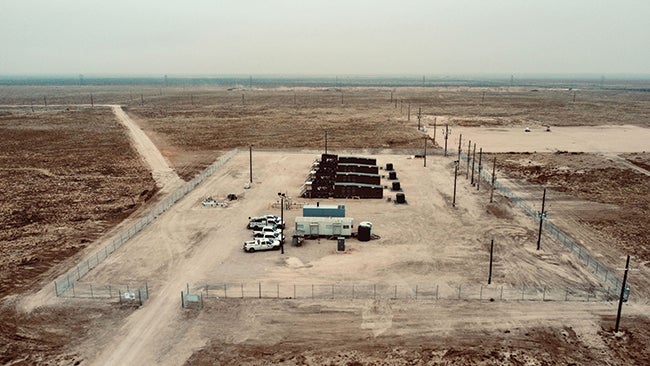 |
Like its Gunsmoke namesake, Miss Kitty—a Plains, Texas behind-the-meter microgrid project—is tough, pragmatic, and distinctly Western. Faced with a hard ceiling on utility power and years-long waits in the interconnection queue, developers Conduit Power and Riley Exploration Permian turned stranded Permian gas into 24/7 electricity, bypassing the Texas grid’s bottlenecks and giving the project the reliability Riley needed to keep drilling and growing.
The Permian Basin’s paradox is that energy abundance often collides with infrastructure scarcity. Natural gas production exceeds pipeline and processing capacity, forcing producers to flare what they can’t move, while interconnection queues, which can stretch for years, bottleneck new loads and limit growth. But for independent oil and gas producer Riley Exploration Permian, that challenge became an opportunity through a collaboration with Conduit Power, a Houston-based commercial and industrial power firm. The companies transformed low-value, stranded gas into reliable onsite generation, creating an island microgrid that empowers drilling expansion. The approach exemplifies how infrastructure limitations can catalyze industry-leading sustainable solutions.
Conduit, founded in 2022 with backing from Grey Rock Investment Partners’ decarbonization fund, was built to resolve a fundamental problem: oil and gas operators often sit on low-value natural gas while transmission bottlenecks and diesel dependence limit their growth. “The fund that we’re tied into is a decarbonization fund, so [we focus on] legacy places where diesel is heavily utilized and convert that into more of a lower emissions type profile of the natural gas engines and work through ways that we can add value operationally,” explained Monet Maxwell, Conduit’s senior director of Asset Management. That mission has more recently taken into account speed-to-market imperatives, she noted. According to the Electric Reliability Council of Texas (ERCOT)’s 2024 Permian Basin Reliability Plan, peak demand in the region is projected to rise from 3.4 GW in 2022 to 26.4 GW by 2038, mainly driven by oil and gas electrification and data center development.
For Riley, the dilemma has held high stakes. While its oilfield operations in Plains, Texas, required nearly 23,000 horsepower of load, only half to two-thirds of that capacity was consistently available. A utility contract capped expansion, leaving Riley unable to bring on new wells or pumps without breaching its limit. “They’ve got to plan their production around the power that they have in that area,” Maxwell said. Given the congested interconnected queues and hurdles constraining transmission expansion and land acquisition, “Being able to self-generate gave them fewer limitations on what that looks like for their growth profile,” she said.
In 2023, Riley established a 50-50 joint venture with Conduit Power to form RPC Power, an entity designed to own and operate dedicated generation assets. The partnership crystallized around Riley’s existing private-use network, a 25-kV overhead line system originally strung to individual wells, which became a backbone for a new model of behind-the-meter power. RPC’s first project, Miss Kitty, leveraged an ideal site adjacent to Stakeholder Midstream’s 30-30 Gas Treating and Processing Plant in Yoakum County. The completely islanded 20.8-MWe microgrid, completed in October 2024, has since become a flagship project for RPC Power.
Miss Kitty: Inside the Saloon
Miss Kitty comprises eight MTU 20V4000L64FNER reciprocating engines, each delivering 2.6 MW of nameplate output. The engines’ configuration optimizes reliability over maximum throughput, consuming approximately 1,500 to 1,600 thousand cubic feet (MCF) per day of natural gas to generate consistent industrial power for Riley’s operations, Maxwell said. The project’s fuel pathway also illustrates sophisticated integration with existing infrastructure. Natural gas from Riley’s wells flows to the nearby Stakeholder 30-30 processing plant, where it undergoes treatment to meet MTU’s stringent composition requirements. These include heating values between 8-11 kWh/m³, methane number stability within±5 MN/min, and heating value deviation of±5%. After processing, the gas returns at approximately 100 PSI through a dedicated pipeline equipped with emergency shutoffs, gas chromatography, knockout drums, and filtration systems. At the generation site, pressure drops to 3 PSI before combustion (Figure 1)
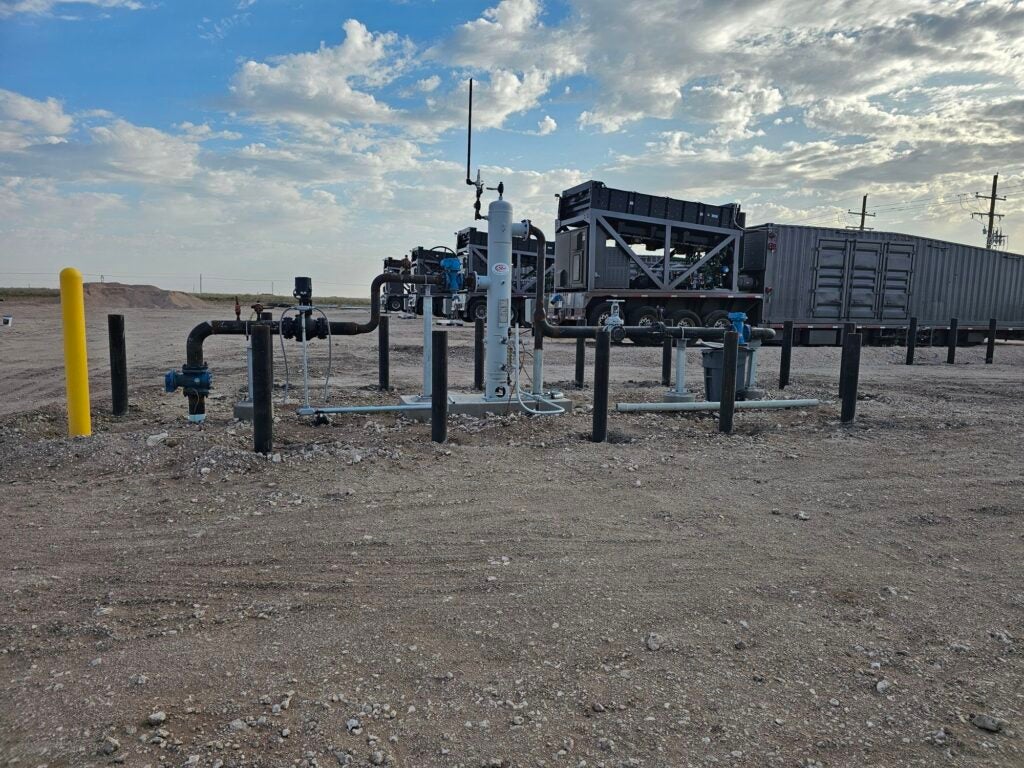 |
|
1. The 20-MW Miss Kitty microgrid in Plains, Texas, uses treated natural gas from Riley Exploration Permian’s nearby wells into 24/7 islanded power for the company’s private-use network. Courtesy: Conduit Power |
The electrical design evolved in two phases: Gen Site 1, brought online in April 2024, operates at 600 V with 600-V auxiliaries, and Gen Site 2, commissioned in October 2024, operates at 13.8 kV with 480-V auxiliaries. Both tie into Riley’s 24.9 kV private-use network, stepping up power via transformers and enabling seamless integration with field operations. Load sharing across eight units ensures dynamic response to pump and compressor demands, albeit with some frequency and rpm variability as engines adjust to real-time loads.
Conduit Power managed engineering and oversaw Summit Industrial as the engineering, procurement, and construction contractor. Although supply chain constraints delayed the planned 4.5-month site prep-to-commissioning, construction began in April 2023 and concluded in late 2024. Equipment shortages prompted a temporary turbine solution—initially an SMT 60, then a Taurus 60—running alongside two commissioned reciprocating engines. Mixed-generation load sharing, however, proved complex. “Because of their different sizes and different OEMs they were not able to load share together making the power plant control complicated,” Maxwell explained. However, the experience informed future deployment strategies and reinforced the value of standardized equipment selection for operational simplicity.
The project’s modular design also eased maintenance at the remote site. When a generator bearing failed, the entire skid-mounted unit was wheeled to the factory for repair. Maxwell noted that local workforce integration bolstered community impact. Contractors from Hobbs, New Mexico, two Plains-based operators, and an operations manager joined the project team. Permitting followed a swift Texas Commission on Environmental Quality standard pathway—3–4 weeks for air permits and concurrent Title V applications—far faster than ERCOT and SPP’s multi-year interconnection queues.
A Test of Grit: Reliability in the Field
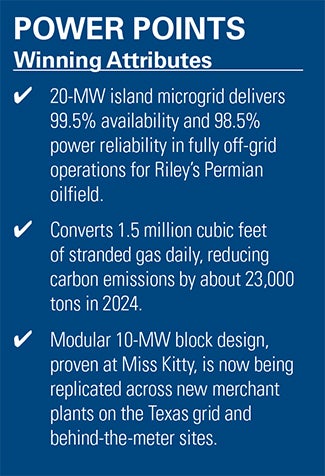 Today, Miss Kitty’s operational performance demonstrates the viability of behind-the-meter natural gas generation for critical industrial applications. The facility has achieved 99.5% site availability and 98.5% power delivery reliability. The difference reflects gas composition issues and field-related interruptions—challenges inherent to operating in proximity to active gas processing facilities, Maxwell noted. “That is honestly one of the largest challenges we have right now, because we’re so close to the natural gas facility,” she explained. “If the natural gas plant has an issue, they’ll switch to the pipeline gas that’s in the area, and that can have a 10% deviation and composition, which is outside of the threshold of the engines.” Manual gas composition adjustments—five to seven per month—are required when fuel quality shifts mid-stream, she noted.
Today, Miss Kitty’s operational performance demonstrates the viability of behind-the-meter natural gas generation for critical industrial applications. The facility has achieved 99.5% site availability and 98.5% power delivery reliability. The difference reflects gas composition issues and field-related interruptions—challenges inherent to operating in proximity to active gas processing facilities, Maxwell noted. “That is honestly one of the largest challenges we have right now, because we’re so close to the natural gas facility,” she explained. “If the natural gas plant has an issue, they’ll switch to the pipeline gas that’s in the area, and that can have a 10% deviation and composition, which is outside of the threshold of the engines.” Manual gas composition adjustments—five to seven per month—are required when fuel quality shifts mid-stream, she noted.
Still, the project operates with meaningful environmental benefits. Its 2024 operations generated a 25% reduction in carbon emissions, which stems from converting previously stranded gas into useful energy. The economic model, meanwhile, reflects the project’s dual value proposition of fixed cost leverage and operational flexibility. “Most of the costs are fixed, so as more load comes on, there is a reduction in the kWh cost,” Maxwell said. “This allows for operational flexibility as more load growth can be brought online.” In addition, the project has shown resilience during severe weather events, which has validated the concept of island operation.
RPC is now looking to further bolster these benefits with battery system integration designed to enable higher capacity utilization while maintaining reliability standards. Engineering is underway to add BYD Cube Pro battery storage—two 1,089-kW containers per phase, totaling 4,356 kilowatt-hours of storage capacity—across both sites. “Right now, we’re maintaining it by having a lower load,” Maxwell said. The next step is to increase the amount of load in the area while maintaining the same sort of reliability and resiliency that we have in place. By adding the battery system, we’ll be able to run each individual engine at a higher rate, and if we have a single component failure, that load would be taken instantly by the battery and then distributed out across the engines that are running.”
Maxwell added that the project’s underlying electrical backbone has been equally important in enabling growth. “The private use network has given us so much flexibility,” she said. “As we’re bringing on more load, the switching that they’re able to do with the way that the network is set up has been really great in being able to grow this organically.”
For now, the project’s replicability extends across multiple market configurations and geographic regions. Built in two 10-MW phases, Miss Kitty established the modular block design that Conduit is now deploying elsewhere. The company is developing similar 10-MW blocks for other potential Riley locations while operating a 5-MW facility for natural gas compression in West Texas. Maxwell noted that these standardized units can be configured as behind-the-meter installations or merchant plants connected to ERCOT, demonstrating design flexibility across market structures. Current expansion includes three merchant sites under construction using the same engineering design, plus pre-engineering and permitting for a potential island-mode site for Riley in New Mexico.
But Miss Kitty’s legacy—like its iconic Gunsmoke namesake Miss Kitty Russell—will perhaps more prominently remain a model of pragmatism and resilience, distinguishing itself through the successful convergence of multiple industry trends into a single operational reality. The project’s name, derived from a nearby well, captures the frontier pragmatism driving distributed energy innovation across the Permian Basin: reliability without compromise and growth without waiting for the grid.
—Sonal Patel is a POWER senior editor (@sonalcpatel, @POWERmagazine).



